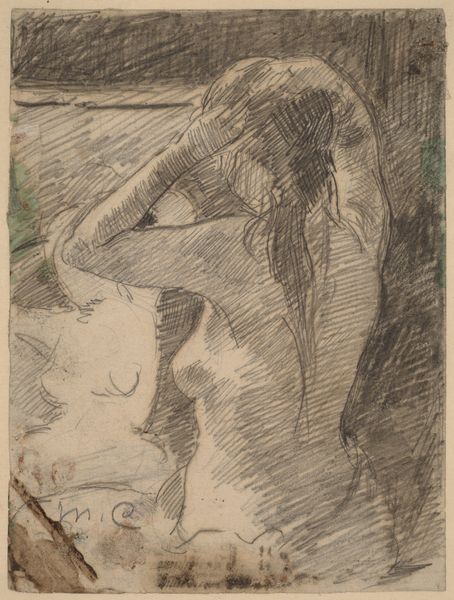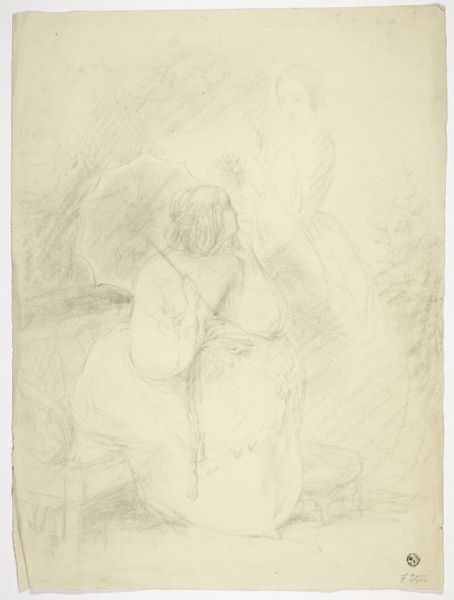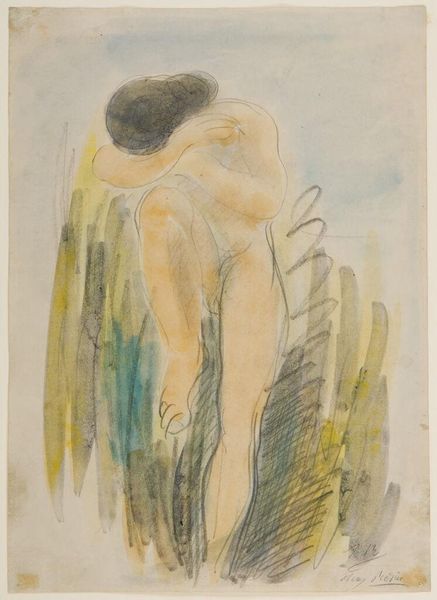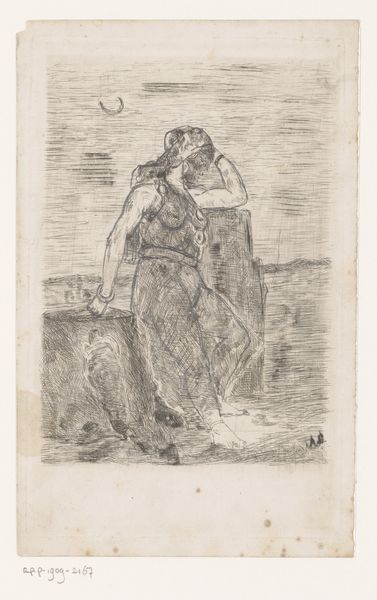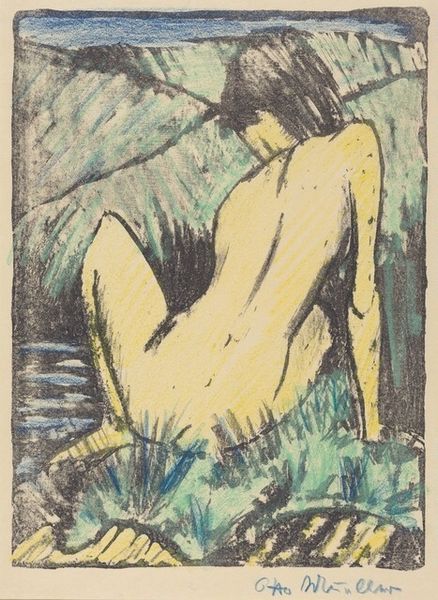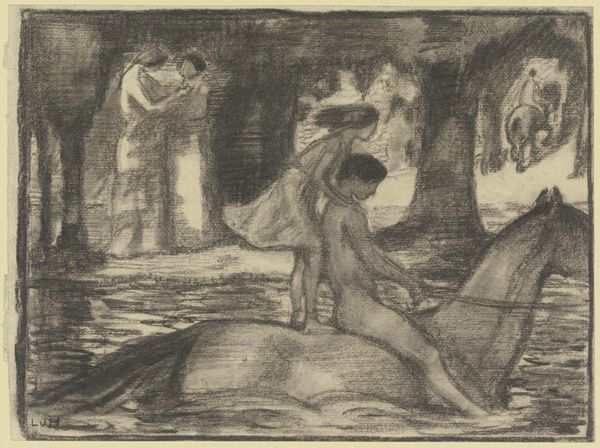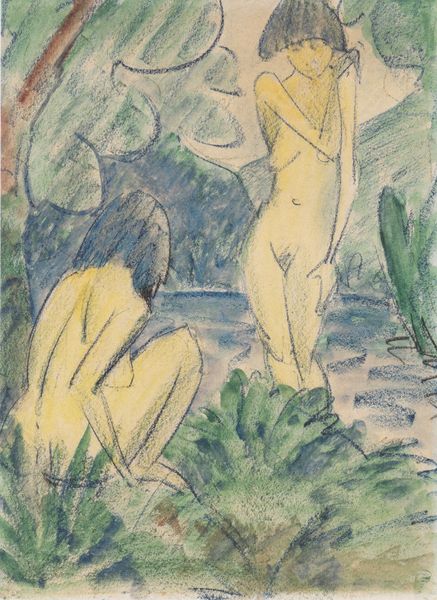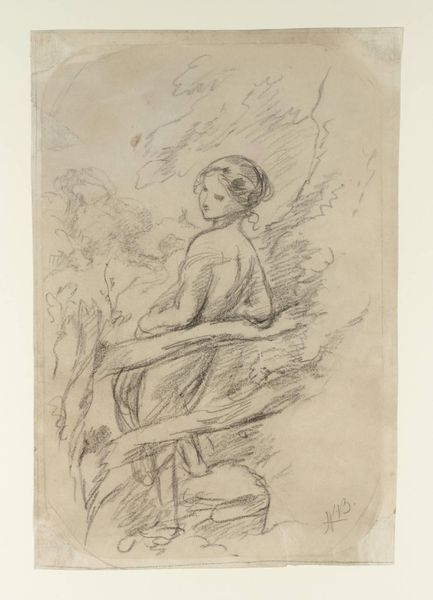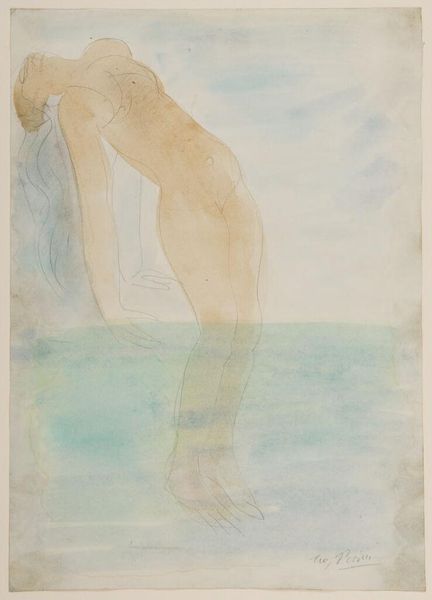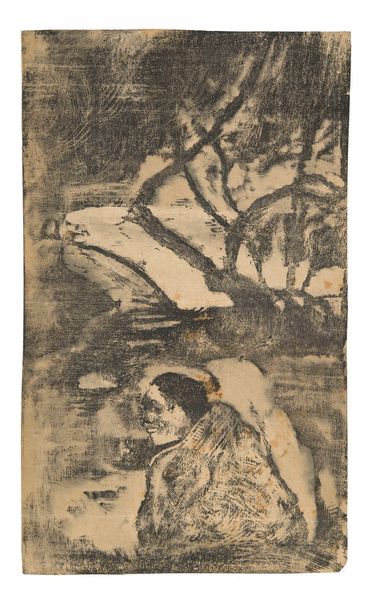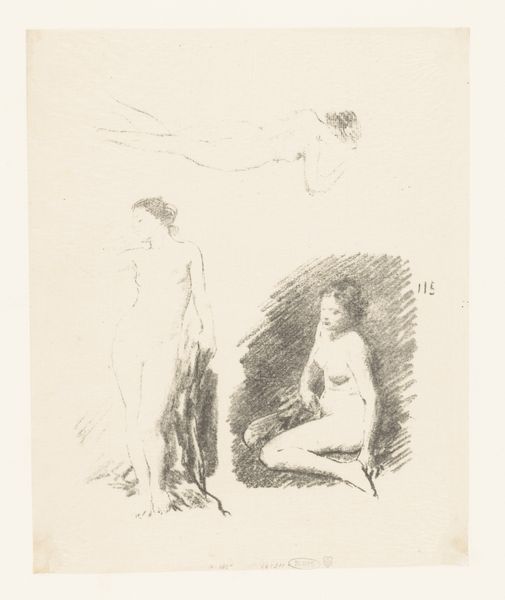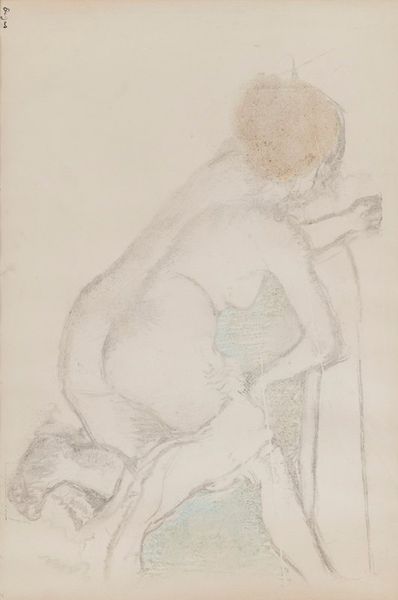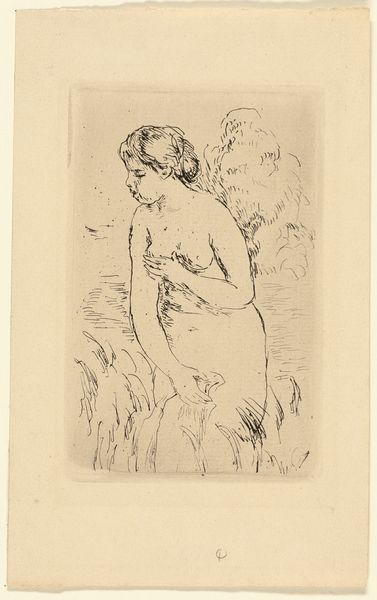
drawing, watercolor, pencil
#
portrait
#
drawing
#
impressionism
#
charcoal drawing
#
figuration
#
watercolor
#
pencil drawing
#
pencil
#
post-impressionism
#
watercolor
Copyright: Public Domain: Artvee
Editor: This watercolor and pencil drawing is titled "Tahitien Assis", or "Tahitian Seated" by Paul Gauguin. The soft color palette makes it look very dreamlike. What strikes you when you look at this piece? Curator: I'm immediately drawn to the context in which Gauguin made this. His depictions of Tahiti were largely shaped by a colonial gaze and a desire to find an untouched paradise. It's crucial to recognize that the reality of life in Tahiti was vastly different from what he portrays. Do you think he idealizes his subjects? Editor: I can definitely see that, yes. There is a definite "exotic" feeling to it. What does this piece say about the politics of imagery in that era? Curator: Well, this piece exemplifies the exoticism and primitivism that were fashionable in European art at the time. It reflects a romanticized view of non-Western cultures, often ignoring the complex social and political realities of those societies. Consider how his art may have shaped public perceptions and justified colonial policies. Editor: It’s unsettling to realize how art can be complicit in reinforcing those kinds of power dynamics. Is there something we can learn from how museums showcase this piece? Curator: Absolutely. Museums now have a responsibility to provide critical context when displaying works like this. They must address the problematic aspects of Gauguin's work, including his exploitation and misrepresentation of Tahitian culture, to encourage a more nuanced and informed understanding of the artwork and its historical impact. Editor: That makes so much sense. It shifts the viewing experience from passive appreciation to critical engagement. Thank you. Curator: Indeed. Thinking about Gauguin’s piece in this light certainly highlights how important it is for cultural institutions to take on a critical approach to their collection.
Comments
No comments
Be the first to comment and join the conversation on the ultimate creative platform.
